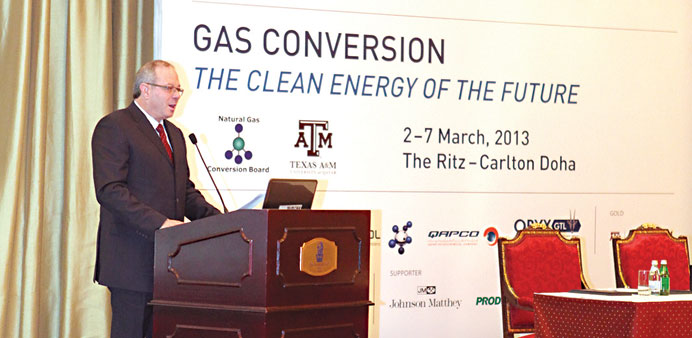Natural gas has emerged as a major component in the global power generation market, but until recently it lacked the versatility to address other pressing energy needs, Sasol Qatar country president Marjo Louw said.
“We must work together to drive commercial acceptance of GTL products,” Louw said at the ongoing 10th Natural Gas Conversion Symposium (NGCS) in Doha, hosted by the Natural Gas Conversion Board and Texas A&M University at Qatar.
“The NGCS is an ideal platform for Sasol to showcase not only our innovative technology, but the commercial application that has led to our world-leading position in synthetic fuels,” Louw said.
Sasol took platinum sponsorship of the event with Oryx GTL, its joint venture with Qatar Petroleum in Qatar.
More than 300 researchers, scientists and industry executives from some 32 countries are participating in the event, held under the patronage of HE the Minister of Energy and Industry Dr Mohamed bin Saleh al-Sada.
Two Sasol executives made presentations as part of the commercial panel at the symposium.
Philip Gibson (Sasol Technology) spoke on “The Importance of Fundamental Insight for Accelerating the Development of a Cobalt Fischer-Tropsch Catalyst Regeneration Process.”
Alex Vogel, also from Sasol Technology, spoke on “Intensification of the Sasol SPD Reactor – Realising Potential”
The commercial session was capped by a keynote by Louw, speaking on, “Unlocking GTL Value at Scale: Stability and Efficiency.”
He reiterated the bright future ahead for GTL given the rapid increase in gas production and an indication that the dissociation between oil and natural gas prices will continue.
Vogel spoke about maintaining constant reactor volume, while enhancing conversion efficiency through relative increases in gas velocity and catalyst concentration. The promise is potentially doubling the capacity of the reactor at essentially the same reactor volume.
This would create cost and design efficiencies that are integral to continued commercial scale-up to meet the demands of the global energy market now, and in the future.
Gibson’s presentation focused on the catalyst, a crucial element in the economic viability of the gas conversion process.
He reviewed the research Sasol was conducting with academic partners into the deactivation mechanisms that lead to the need for replacement of catalyst material. The research has been validated at demonstration scale, resulting in multiple regeneration cycles on a demonstration unit. Longer-lasting catalysts would effectively lower catalyst cost and result in reduced consumption of raw material.

